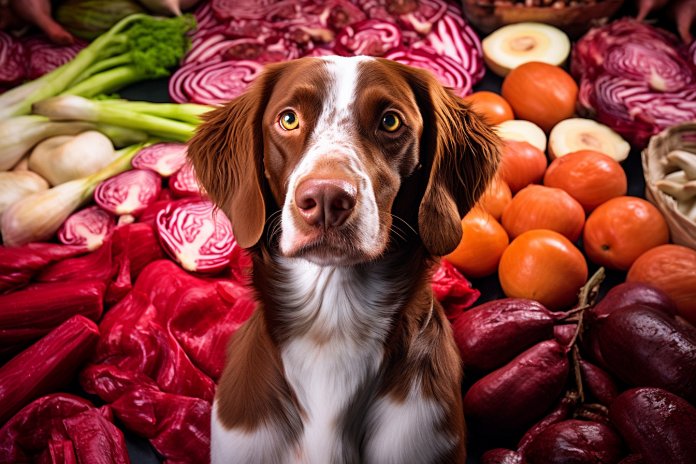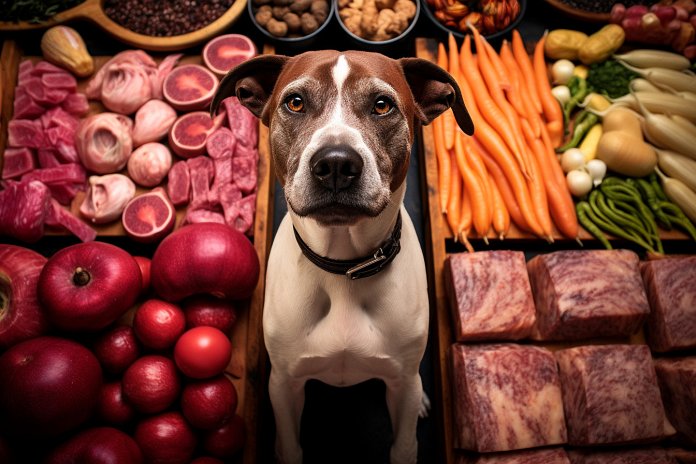
Dogs are carnivores, but they need more than just meat to thrive. While a meat-heavy diet is important for dogs, they also require a variety of vitamins and nutrients that meat alone cannot provide. Feeding your dog only meat can lead to health issues and deficiencies. In this article, we will discuss the signs that a meat-only diet isn’t working for your dog, as well as the history of dogs’ diets and the science behind why they need more than just meat. We will also provide tips for transitioning your dog to a more balanced diet.
Signs That a Meat-Only Diet Isn’t Working For Your Dog
A meat-only diet can lead to nutrient deficiencies in dogs, which can manifest in various symptoms. These symptoms include bowel issues such as constipation, loose stool, and diarrhea. Gassiness and itchiness can also be signs that your dog’s diet is not providing the necessary nutrients. Weight loss, frequent sickness, and ear problems can also indicate that your dog’s meat-only diet is not sufficient.
Body Language
Your dog may exhibit certain body language signs to indicate that his meat-only diet is not healthy for him. These signs include cowering, scratching, weakness, drooling, lack of focus, sweaty paws, and ears back. These behaviors can be a result of nutritional deficiencies caused by an imbalanced diet.
Other Signs
In addition to body language signs, there are other indicators that your dog’s meat-only diet is not ideal. These signs include lethargy, weight gain or loss, stomach problems, itchy ears, lack of motivation to play, constipation, diarrhea, and vomiting.
The History of Dogs Living Off Meat
Historically, dogs were fed only meat and bones as it was believed to be the most beneficial diet for them. However, with the advent of commercial pet food, the perception of dogs’ dietary needs changed. The US National Academy of Sciences National Research Council published nutritional requirements for dogs and cats in the mid-1980s, which emphasized the importance of a balanced diet that includes more than just meat.
The Science Behind a Meat-Only Diet
While dogs require a significant amount of protein from meat, their bodies also need other nutrients found in fruits and vegetables. Dogs in the wild scavenge for a variety of foods, including partially digested vegetation, to fulfill their nutritional needs. Meat alone cannot provide all the essential vitamins and nutrients that dogs require, such as Vitamin E and fatty acids. Feeding your dog a meat-only diet can deprive him of these essential nutrients.
Training a Dog to Accept His Food
If your dog is used to a primarily meat-based diet, transitioning him to a more balanced diet may take some time and effort. Establishing a regular feeding schedule and gradually introducing new foods can help your dog adjust to the change. It is important to ensure that your dog is housebroken before making the transition, as the new food may upset his stomach. Additionally, incorporating wet-mixed food into his diet can aid in the transition process.
“Feeding your dog a meat-only diet may seem natural, but it’s important to remember that they need more than just meat to thrive.”

Tips & Things to Know
1️⃣ Dogs need more than just meat in their diet: While dogs are carnivores and require a protein-heavy diet, they also need a variety of vitamins and nutrients that meat alone cannot provide. Feeding your dog a meat-only diet can lead to deficiencies and health issues.
2️⃣ Look out for signs of nutrient deficiencies: If your dog is on a meat-only diet, watch for signs such as bowel issues (constipation, loose stool, diarrhea), excessive gas, itchiness, weight loss, and ear problems. These could indicate that your dog is not getting the necessary nutrients from their diet.
3️⃣ Transitioning to a balanced diet takes time and patience: If you want to introduce other foods to your dog’s diet, do it gradually to avoid upsetting their stomach. Set specific meal times and be consistent with feeding. It may take time for your dog to adjust to new tastes, but with patience and persistence, they can learn to accept a balanced diet.
Frequently Asked Questions, Answered ✅
1. Can dogs live on a meat-only diet?
– No, dogs need a variety of vitamins and nutrients that meat alone cannot provide.
2. What are the signs that a meat-only diet isn’t working for a dog?
– Bowel issues such as constipation, loose stool, diarrhea, and vomiting.
– Excessive gas and gassiness.
– Allergic reactions, manifested as itchiness.
– Weight loss and a lack of sufficient weight gain.
– Repeated ear problems and infections.
3. What are some body language signs that a dog’s all-meat diet isn’t healthy?
– Cowering, scratching, weakness, drooling, lack of focus, sweaty paws, and ears back.
4. What are other signs that indicate a dog’s all-meat diet isn’t the best for them?
– Lethargy, weight gain or loss, stomach problems, itchy ears, lack of motivation to play, constipation, diarrhea, and vomiting.
5. Why is a meat-only diet not sufficient for dogs?
– Dogs are considered omnivores and need a balanced diet that includes meat, fruits, and vegetables.
– Essential nutrients like Vitamin E and fatty acids are not contained in meat alone.
– Wild dogs scavenge for a variety of foods to get the natural vitamins their bodies need.